Derp Debunked: Retiring Two Cherished Myths About Guns
Derp Debunked: Retiring Two Cherished Myths About Guns
There’s no shortage of myths, legends and folk wisdom in the gun community. That’s not an entirely bad thing though, as this shared lore makes up part of our cultural landscape. Some of these things are harmless historical artifacts, tall tales or larger-than-life embellishments on factual stories. However, others are persistently and actively harmful. In fact, some shooters aren’t too keen to part with certain delusions and outright falsehoods, even when provided with evidence contrary to their misguided beliefs. In spite of the tireless efforts of dedicated teachers and experts to eliminate these myths, they somehow continue to be perpetuated and live on.
You can put a nice coat of paint on any busted idea and sell it as something else. Call this by any other name you want; institutional inertia, common knowledge, “the way we do it” or something similar. However, after careful analysis, there’s no hiding a bad idea. Objectively bad. Full stop. The End.
Below I will address a couple of these latter-day myths and I’ll make a case that each of them needs to be taken behind the woodshed and retired unceremoniously. I’m not here to mock anyone (too badly) and I certainly believed in one of these myths myself once upon a time. Though looking back on it, I can’t remember why. Not all ideas are equal and sometimes the reductive method is an easier path to improvement than the constructive one. It’s a simple affair to eliminate or halt known bad processes and eliminating a weak point makes the whole stronger in short order.
Fair warning reader, if you consider either of these myths true, your jimmies may be rustled. Nevertheless, hear me out and if you or a shooter you know subscribe to either, consider sharing the good word. Only you can prevent the spread of derpy myths.
Myth 1 – You Should Keep Your Guns Immaculately Clean
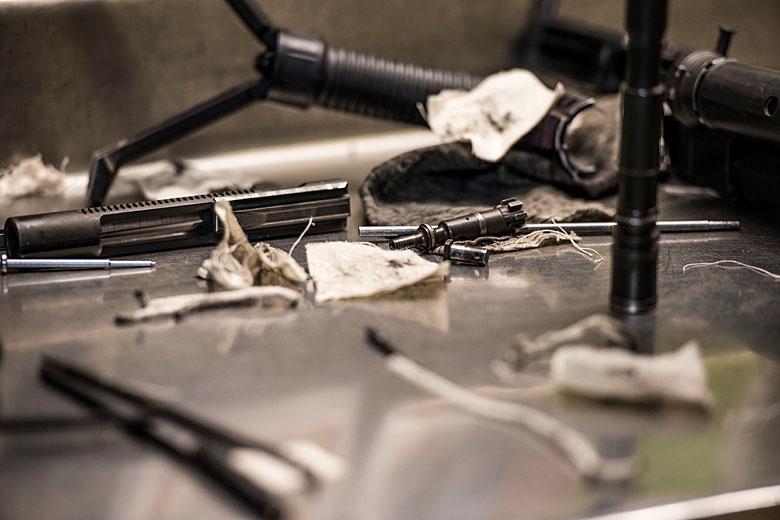
Of all the myths on my list, this is the one that most readers will be guilty of and for the right reasons! I sure was until fairly recently. On its surface, it’s a hard point to argue against. The wisdom of keeping your guns, especially those called on in a duty or other life-saving capacity, in tip-top shape is obvious. Also, let’s get real, who among us doesn’t enjoy the sight of one of our guns shining clean and smelling of Hoppe’s? No matter how it was instilled in a shooter, be it passed down from father or grandfather as a ritual of gun ownership, or ruthlessly and painfully drilled into the skulls of military recruits, the maxim is exactly the same: Keep your gun spotlessly clean.
Take care of your tool and it will take care of you. Treat your weapon as an extension of yourself. Keep it clean and it will keep firing. It sure makes sense. However, the issues that start to arise from fanatical cleaning (actually over-cleaning) are subtle and negatively impact the operational lifespan of your guns. Periodic, sensible, routine and preventative maintenance is one thing, as is remedial cleaning and inspection after significant exposure to water or harsh conditions.
However, the zealous, detail strip and white glove-clean treatment that some shooters administer to their guns do nothing more than accelerate wear and breakage. Yes, really.
Due to enshrining absolute cleanliness as a virtue and the removal of every trace of residue as a holy mandate, some shooters won’t stop attacking their guns after even a day at the range with more and more aggressive brushes, scrapers, chemicals and cleansers until they’re operating theater clean. A few wayward souls even get after their guns with the infamous Dremel or other motorized tools. This is totally unnecessary for nominal function and this constant cleaning and disassembly harms the gun by eroding tolerances, thinning or breaching surface coatings and even wearing away the surface hardening of working parts.
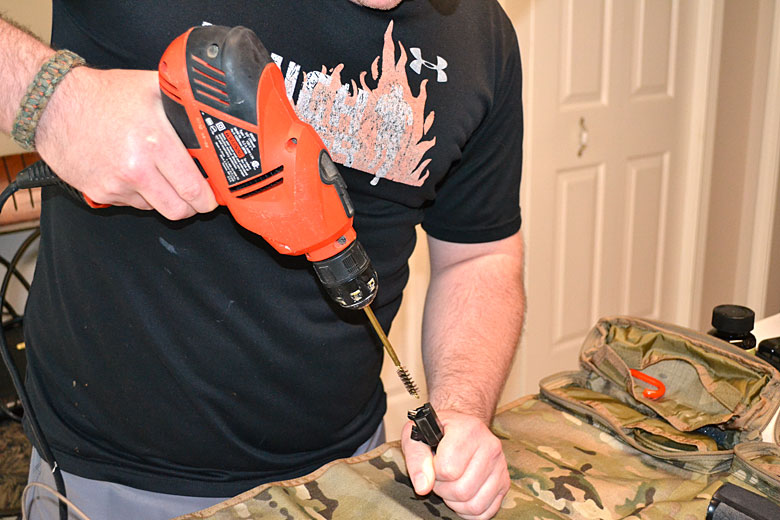
One of the best examples of these myths at work is the tender ministrations inflicted on the AR-15. Thanks to lingering sentiments of prissy unreliability from Vietnam-era veterans and the discipline-centric methodology of military training, the average AR will be cleaned with destructive intensity. The tail and lugs of the bolt suffer under a variety of hard scrapers and picks in a quest to get every bit of carbon buildup off. Barrel extensions will be scoured shiny by steel brushes. Bolt carriers are soaked in brake cleaner or worse. All this adds up to reduced service life. Bolts that may last 10,000 rounds or more can break or shear a lug in 5,000 or 6,000 rounds, all thanks to user-inflicted wear. It’s such a shame and waste. Cleaning procedures like this are often applied to pistols and shotguns too, with no gain in reliability or longevity.
Most quality, modern guns are remarkably reliable given just a tiny bit of care. Barring your gun taking a dive in the mud, being thoroughly drenched or dunked in water, or contaminated with corrosive residue from surplus ammo, you don’t need to detail clean it after a routine range session. Most rifles, pistols and shotguns will run all day and all night with carbon and gunk seeping out of them, so long as they are kept lubed. Relentless attempts to purge the bore of all traces of copper or lead won’t improve reliability and will likely result in a Point of Impact shift on rifles. I’m not advocating you neglect your guns, but I am asking that you consider what they’re designed to do.
Compare a gun with an average engine in a car or truck. An engine will be hot, dirty and greasy in the best of times and still run perfectly well as long as there’s oil in it. You don’t need to change the oil and get the engine bay showroom clean after a weekend of driving. I apply that same logic to my guns. My training and fun guns will be wiped down after use with an oily rag, have a few drops of lube applied at specific points and perhaps have a patch run through the bore. The exception being if they are too filthy to handle or were dropped in mud or water.
I do keep my daily carry pistol clean to a higher standard, typically adding lube after any amount of rounds fired or disassembling and wiping it down after a few boxes worth. However, from my experience, I’m far more worried about accelerating wear and breakage from misguided and overzealous cleaning. If you have a vintage gun with a delicate, rust-prone finish, or one that’s so temperamental it requires constant maintenance, by all means, give it the TLC it requires. Otherwise keep them lubed, clean them at sensible intervals and you may be surprised at how well they run in spite of their grubby internals.
Myth 2 – “Just As Good As…”
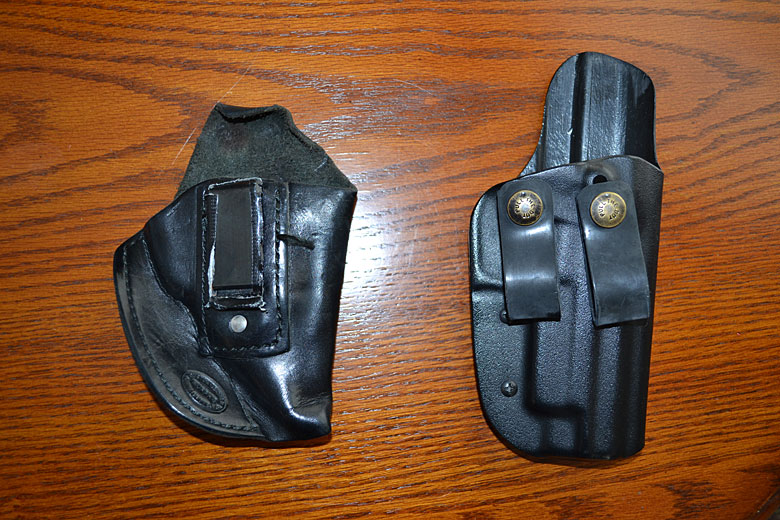
Human nature and reason don’t always go hand in hand happily. In fact, on some topics, the two seem to be mortal enemies. Nowhere is this truer than the subject of comparing guns and gear. Comparisons between brands of rifles, pistols, holsters and the like are inevitable when shooters enjoy a robust and thriving market of manufacturers; each claiming their offering is a stronger, faster or sexier solution.
That’s a good problem to have. Sadly though, thanks to an overabundance of opinions on the Internet, lack of codified empirical data or testing and disinformation embedded in the psyche of some sectors of the shooting populace, the noise to signal ratio is high. There’s no standardized testing body or organization for guns and related equipment on any kind of scale that would give us good, actionable data. Most of what we accept as true about our guns and gear comes from prominent voices in the gun media. This is a blessing and a curse, as the layman can be online listening to an expert, industry-respected teacher who sees hundreds or thousands of guns in the wild every year dropping knowledge bombs one moment and with a mouse click be getting a second opinion from some dude who’s blowing up barns with a Taurus Circuit Judge and Tannerite.
Gunhands who are serious about their purposes, be they Military, Police or civilian, face a wooly task sorting out worthy opinions from the questionable ones. These shooters, who I call “true adherents,” have different standards for selection than your average gun owner. When your equipment must meet certain performance criteria, nothing else will satisfy. Establishing genuine hierarchies in any category of guns or equipment is important. Classifying options as unsatisfactory, acceptable, good and best is the only way to make sense of all the choices available to us.
This is a very tender spot for those who simply want to be happy or feel justified with their choices and it causes plenty of friction between users who otherwise have much in common. Stemming either from intellectual dishonesty or just being genuinely misinformed, you’ll hear a line tumble from the lips of a few people in every single forum, range and gun shop (on both sides of the counter), “Well, my ‘X’ is just as good as…” That’s when the fighting starts.
No one wants to be told their dog is ugly or be made to feel inferior. Everyone wants to be the guy or gal who made smart choices that are respected by their peers. Whatever you’ve bought, if you’re happy with it then I’m happy for you, but proclaiming something of inferior function, materials, design or craftsmanship to be equal to something quantifiably better is irresponsible and contributes to poor decision making.
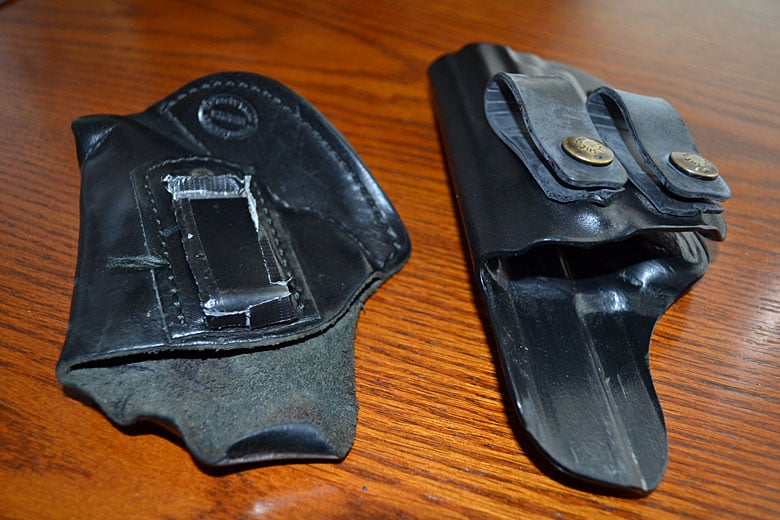
These myths and attitudes result in some folks deriding purchasers of high-end brands among products like AR’s, pistols, armor and even tourniquets, as fools for overpaying. Worse, they’ll be referred to as elitist snobs who are under the misguided assumption that the Gucci-gear effect is real and after a certain price point you’re only paying for a manufacturer’s logo and not superior performance or capability.
I can’t spare the space in this article on a line by line rebuttal of that particular assumption, but I’ll assert with complete confidence that 95 percent of the time, you get what you pay for when it comes to guns, equipment and training. Below a certain price point, real quality truly becomes impossible.
I’m not suggesting you have to buy world-class quality gear all the time. A lesser make or model may be more than adequate for your needs or a specific task and of course, plenty of products are neck and neck in performance with their closest competitors. We all understand that. What needs to die is the attitude that leads to a casual, arrogant assertion that just because a Blando Brand AR looks or functions the same as a Knight’s Armament, it’s as good as a Knight’s. Or a Chinese rip-off CAT tourniquet is a fine way to save a few bucks over the genuine article. Your cheap knockoff gear may have worked fine for you this whole time. Fair enough, roll on but remember that sample sizes matter and good luck will cover poor choices.
Quality speaks. If you’re serious about your purpose, buy the best guns, gear and training you can afford.
Myths Begone
It can be tough giving up on a belief you’ve held for a long time or changing something you’ve always done. I’d remind readers that just because you’ve always done something a certain way doesn’t mean it isn’t harmful or dumb.
If you think the myths I’ve relayed to you in this article are false and you’re going to prove it in the comments, I’d kindly challenge you to not take my word for it. Seek out some new sources of information. Dust off those critical thinking skills. Disabusing yourself of a misconception is growth and growth is always a bit painful. However, the alternative, stagnation, is terrible no matter how comfortable it might be.
Editor-in-Chief’s Note: Chad Nabors writes about firearms, with a strong focus on concealed carry, pistols and daily preparedness. His background is in commercial sales, training and armor development and testing. He’s trained many citizens on the pistol from basic to advanced skills and resides somewhere in Greater Appalachia, where he still rocks a classic double-action SIG. He hates low-quality guns and never wears camo. You can reach him at [email protected]
Photography by Ben Stephens of One Seven Photography.






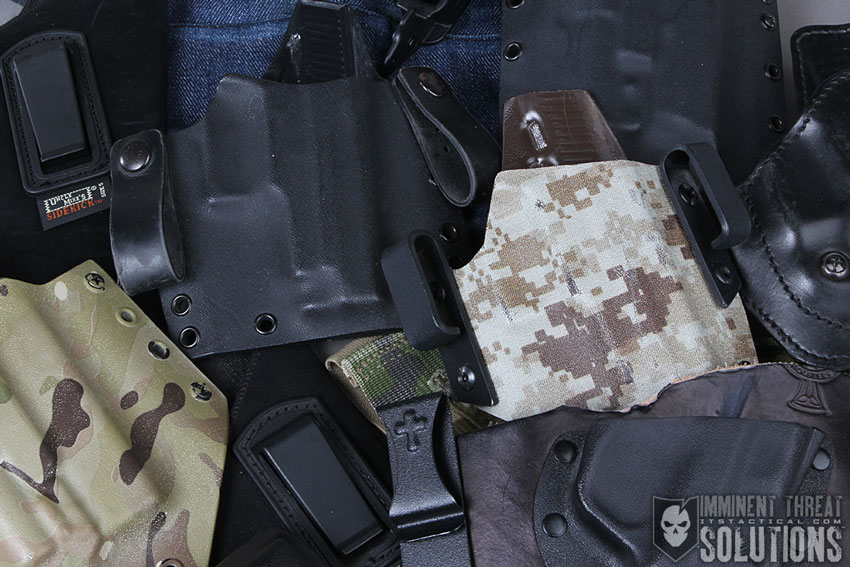
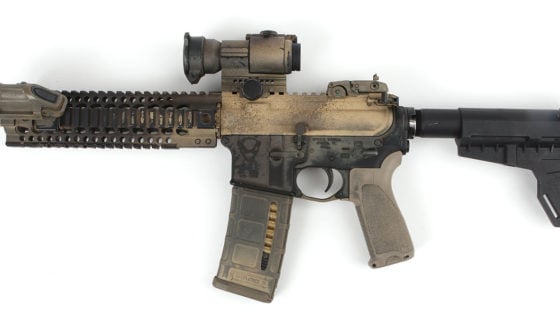
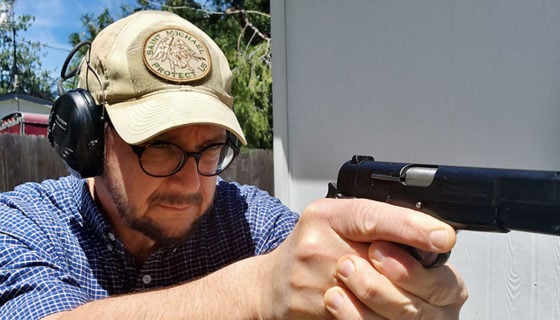


Discussion